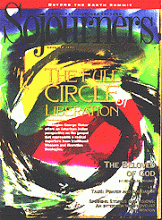Christ the Redeemer towers high above Rio de Janeiro, with outstretched arms and an expression of pathos and compassion. The statue is the landmark of Rio. Residents say they look for it whenever, in this city of 11 million people, they have lost their way and need directions.
Standing at the feet of Christ atop the mountain, the city looks stunning in its beauty, drama, and charm. But Christ's look of pathos also sees the violence, anxiety, and despair. Homeless children are murdered each day; most are black. Thousands of desperate women try to sell themselves to stay alive. The middle class are afraid to ride buses or ferries wearing their watches and earrings. And many see no clear way to a future with promise.
For 14 days in June 1992, Rio welcomed the "Earth Summit" into its midst. Nothing quite like this had ever happened before in history. Representatives of 178 nations of the world gathered to consider the prospects for the future of humanity and the sustainability of the planet.
Titled the United Nations Conference on Environment and Development (UNCED), the gathering had as its aim the formulation of cooperative international policies to protect the Earth and meet the needs of its growing number of inhabitants. At the conclusion, more than 100 heads of state came for history's most inclusive "summit" meeting of governmental leaders. And 9,200 journalists were there to report on the event.
Read the Full Article

